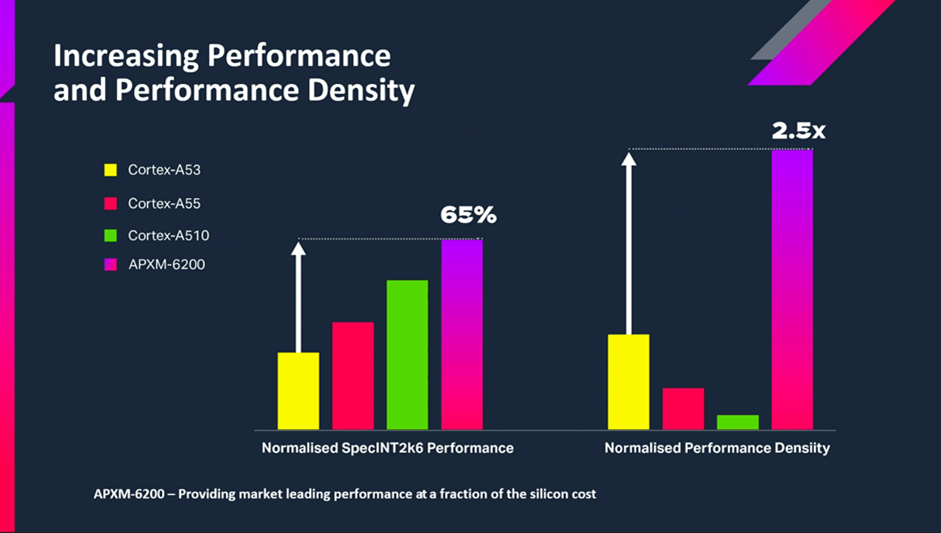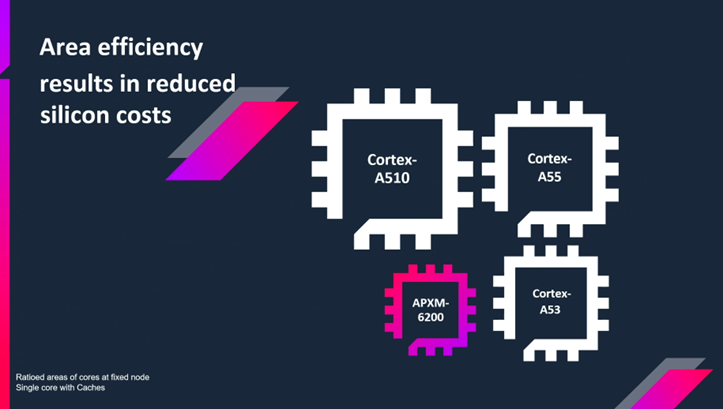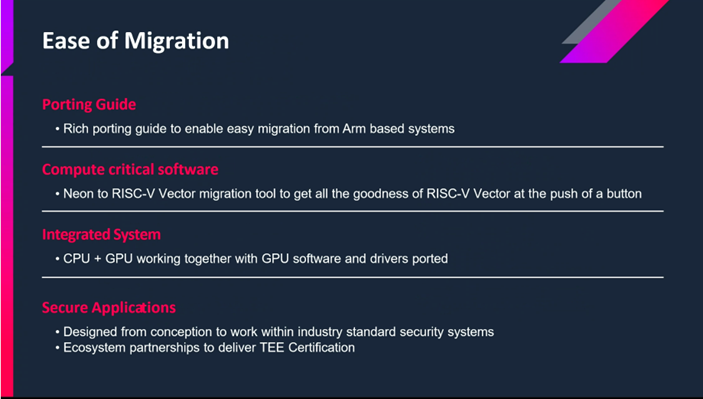Imagination Technologies has launched the APXM-6200 CPU, a RISC-V application processor that it says offers a 65% performance boost and 2.5 times higher performance density than similar CPUs. Users can choose single-, dual-, or quad-core setups with power management for each core. The processor supports 128-bit RISC-V vector extensions for AI tasks. Imagination emphasizes its differentiation in software, system, tools, and security. They address trust issues in RISC-V hardware with a multidomain isolation solution. Imagination also provides an integrated system solution with CPU and GPU, optimizing drivers for improved bus utilization.

What we think? While there is an unfulfilled clamour in the market for Arm A73-level RISC-V cores, there’s an impressive alternative from Imagination’s midrange offering, which adds security, vector capabilities, and GPU integration.
However, it seems to us that Imagination’s avowed intent to be the GPU of choice for RISC-V companies is in some conflict with their CPU strategy. If there really is 2x bus utilization driven mostly at the driver level, it feels like it will annoy existing partners. Presumably, Imagination has sized up this risk against the demand for integrated solutions and feels it’s worth it.
The biggest challenge as we see it for RISC-V IP vendors remains deal value: Simply put, big players are not willing to pay big money for RISC-V CPUs compared to Arm equivalents, especially in the midrange performance area. Imagination’s ability to balance the deal value across the CPU and GPU may give them an edge there.
RISC-V application processor for intelligent, consumer, and industrial applications
Imagination (aka Imagination Technologies) has launched a RISC-V application processor that it says delivers uncommon levels of performance density.
The APXM-6200 CPU is a 64-bit processor designed for applications featuring an 11-stage, dual-issue pipeline. Imagination claims it offers a 65% boost in performance and 2.5 times higher performance density compared to similar CPUs currently available. Users have the flexibility to opt for single-, dual-, or quad-core setups based on their needs, with individual power management for each core to enhance overall system efficiency and ensure cache consistency. The company says the IP is 25% smaller than an Arm A53. Additionally, the CPU supports 128-bit RISC-V vector extensions for AI tasks, along with rapid data transfer for AI accelerators.
It is the company’s first RISC-V application processor but the second in the Catapult line, the first being a 32-bit in-order core, available for some time and which Imagination says has been licensed to multiple customers.
Imagination says with that as well as performance density, the company believes it has software, system, tools, and security differentiation. Much of this seems to be pitched on a strong belief in retained experience from the company’s Meta and MIPS processor lines and what VP of CPU IP Shreyas Derashri described as, “850 fundamental patents around CPU that Imagination has—it’s quite a unique position.”
In a press briefing ahead of the product announcement, Derashri was very bullish about the growth of RISC-V International’s membership and the inevitability of its success, saying: “It’s not a matter of if and when, it’s a question of how fast it will grow.”
When questioned about why customers would choose RISC-V from Imagination, he stressed that Imagination is a profitable entity, making money and able to invest in RISC-V, as well as having a heritage in delivering complex IP, globally.
Rich Wawrzyniak, principal analyst at SHD Group, backed this up. “Imagination is set to be a force in RISC-V with a strategy that prioritizes quality and ease of adoption. Products like APXM-6200 are exactly what will help RISC-V achieve the promised success,” he said.

Imagination supports its RISC-V cores with the Catapult SDK, which now comes with a new set of vector compute libraries to boost performance for AI workloads.
Despite all the positivity about RISC-V, Imagination perceives the current offerings as having an issue around trust at the hardware level. “There’s a feeling in the industry that CPUs from the RISC-V side are insufficiently characterized and tested,” said Derashri. APXM-6200 answers this with a multidomain isolation solution that integrates with what Imagination says are “well-known and established security frameworks.” They have a blog on the topic.
In the press briefing, Imagination also emphasized that it can provide an integrated system solution with both CPUs and GPUs. They already provide GPUs to several RISC-V customers and have historically been more or less the only game in town.
According to Derashri, optimization of drivers has been “kept as a special sauce” for those taking both CPUs and GPUs from Imagination, and this delivers 2x bus utilization. The GPU is not tightly coupled yet and connects via L2 cache.

Imagination made a big deal about its differentiation from the other 20 or so RISC-V vendors in that they have years of CPU experience, including their acquisition of MIPS and existing customers of the GPU and other IoT IPs that are interested in the company’s RISC-V offering. Furthermore, Imagination points out that its GPU has a robust design that is used in millions of devices today.
However, the company doesn’t have a specific offering with an integrated GPU and said in these early investigations the architecture would not be tightly coupled through an SMA but rather via a shared access to the L2 cache.
So, it’s early days, but Imagination is uniquely placed to be the main viable alternative to Arm, a position the company has been in several times before.